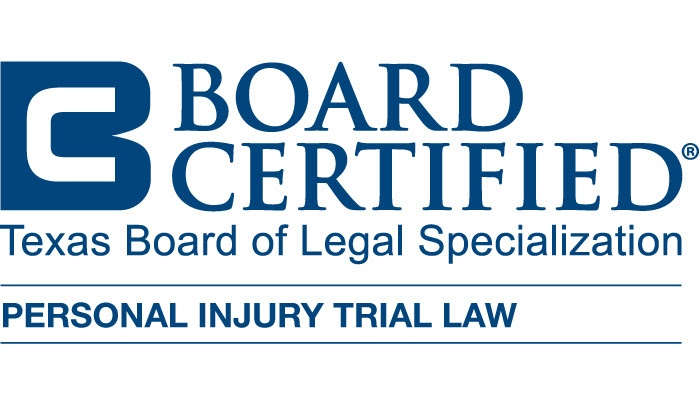Pedestrian safety is a critical concern in Texas, especially with the rise of accidents involving those walking in urban and suburban areas. Texas crosswalk laws are designed to protect pedestrians, but it can be confusing to understand your rights when crossing the street. These laws set the rules for both pedestrians and drivers, ensuring that everyone on the road is safe. Knowing the rules about crosswalks and what rights pedestrians have can help prevent accidents and save lives. At, Willumsen Law Firm, P.C. , we are here to guide you through the legal process and help you navigate the complexities of your case.


Pedestrians should feel secure when walking along Texas streets, but the reality is that accidents do happen. Understanding the state’s crosswalk laws and your rights as a pedestrian can help you avoid dangerous situations and hold negligent drivers accountable if you are involved in an accident. Texas law outlines specific responsibilities for both pedestrians and drivers, and these laws aim to reduce accidents and promote safer interactions between those walking and driving.
Texas Crosswalk Laws
Texas crosswalk laws are in place to protect pedestrians and ensure drivers follow certain rules to keep the roads safe. In Texas, pedestrians have the right to use crosswalks at intersections to cross the street. Drivers are required to yield to pedestrians in crosswalks, especially when the pedestrian has the right of way. Crosswalks are marked areas at intersections where pedestrians can cross, but even when the crosswalk isn’t clearly marked, pedestrians still have rights.
Texas law also states that pedestrians must obey traffic signals at intersections, just like drivers do. If there is a traffic light or pedestrian signal, pedestrians must wait for the signal to show that it’s safe to cross. Crossing the street against the signal, or jaywalking, is not only illegal but can also be dangerous.
Pedestrians are not allowed to suddenly step off the curb and enter the path of a vehicle that is too close to stop. This is an important part of pedestrian safety because drivers may not always be able to stop in time if a pedestrian suddenly enters the roadway. Both pedestrians and drivers have responsibilities when it comes to crosswalks, and both need to be aware of their surroundings to avoid accidents.
My focus is to give a voice to families who have suffered a wrongful death or a serious injury to a family member caused by an 18-Wheeler, commercial truck, or a drunk driver. Contact us today, we can help you.Helping Injury Victims for Over 25 Years
Right of Way in Crosswalks
Pedestrians usually have the right of way when they are crossing the street at a marked or unmarked crosswalk. This means that drivers must stop and allow pedestrians to cross before proceeding through the intersection. However, pedestrians also have a responsibility to make sure they are not stepping into the path of an oncoming vehicle that cannot stop in time.
Drivers must yield to pedestrians in crosswalks, but pedestrians must also be aware of their own safety. In Texas, the law states that pedestrians should not enter a crosswalk when a vehicle is so close that the driver cannot stop safely. If a pedestrian steps off the curb and into traffic, causing an accident, the pedestrian may share responsibility for the incident.
Texas law also requires drivers to stop for pedestrians crossing the street in any crosswalk where there is no traffic signal. This includes intersections without traffic lights or stop signs. Drivers must always be alert for pedestrians, especially in busy areas where people are likely to cross the road.
Unmarked Crosswalks and Pedestrian Rights
Many people assume that crosswalks are only those marked with painted lines, but in Texas, pedestrians have rights even at unmarked crosswalks. An unmarked crosswalk is the area at an intersection where sidewalks meet on opposite sides of the street. Even without painted lines, pedestrians still have the right to cross at these points.
Drivers must yield to pedestrians at unmarked crosswalks just as they would at marked ones. Pedestrians, in turn, must be cautious and make sure that they are not stepping in front of a vehicle that cannot stop in time. Being mindful of your surroundings is important whether the crosswalk is marked or unmarked.
Unmarked crosswalks are often found in residential neighborhoods or quieter areas, where traffic might be lighter. Still, it is crucial for both drivers and pedestrians to understand that these areas are meant to allow people to cross the street safely, even if there are no visible signs or markings.
Jaywalking and Texas Law
Jaywalking refers to crossing the street outside of a crosswalk or ignoring traffic signals. In Texas, jaywalking is illegal and can result in fines. Pedestrians must use designated crosswalks at intersections or cross at areas where it is safe and legal. If a pedestrian crosses the street in the middle of a block or against a traffic signal, they are considered to be jaywalking.
Not only is jaywalking illegal, but it is also very dangerous. Drivers are not expecting pedestrians to cross in the middle of the street, and they may not have time to react. Texas law aims to reduce the risk of pedestrian accidents by enforcing these rules, making it safer for everyone on the road.
It’s important for pedestrians to understand the dangers of jaywalking and to use crosswalks whenever possible. While jaywalking may seem like a quicker way to cross the street, it significantly increases the chances of being involved in an accident.
Related Videos
Choosing a Personal Injury Attorney
Types of Compensation in a Truck Accident Claim
Pedestrian Safety and Driver Responsibility
Pedestrian safety is not just the responsibility of those walking. Drivers in Texas are expected to be aware of pedestrians and to exercise caution, especially near crosswalks. Drivers should always be on the lookout for people crossing the street, particularly in areas with heavy foot traffic such as school zones or downtown areas.
When approaching a crosswalk, drivers must slow down and be prepared to stop if a pedestrian is crossing. Failure to yield to a pedestrian in a crosswalk can result in fines and penalties. It is important for drivers to stay focused, avoid distractions, and be prepared to stop for pedestrians at all times.
Drivers also need to be mindful of pedestrians who may not be using a marked crosswalk but are crossing at an intersection. Even in situations where pedestrians may not have the right of way, drivers should still slow down and avoid aggressive behavior that could lead to an accident.
Accidents Involving Pedestrians
Unfortunately, pedestrian accidents are common in Texas, especially in urban areas. When a pedestrian is hit by a vehicle, the injuries can be severe or even fatal. Texas crosswalk laws are in place to prevent these types of accidents, but when they do occur, it is important to know your rights.
If a pedestrian is injured in an accident, they may be entitled to compensation if the driver was at fault. This can include medical expenses, lost wages, and other damages resulting from the accident. In some cases, the pedestrian may share responsibility for the accident, particularly if they were jaywalking or crossing against a signal. However, even if the pedestrian is partially at fault, they may still be able to recover some compensation.
Texas operates under a comparative fault system, which means that even if a pedestrian is partially responsible for the accident, they can still recover damages as long as they are less than 51 percent at fault. The amount of compensation a pedestrian can receive will be reduced by their percentage of fault.
Understanding Texas crosswalk laws and pedestrian rights is essential for staying safe on the roads. Whether you are a pedestrian or a driver, knowing the rules can help prevent accidents and ensure that everyone can travel safely. Unfortunately, accidents do happen, and when they do, you need someone who can help you navigate the legal process.
If you or a loved one has been involved in a pedestrian accident, Willumsen Law Firm, P.C. can provide the legal support you need. Our team understands Texas laws and is committed to helping accident victims get the compensation they deserve. Contact us today to learn more about how we can help you with your pedestrian accident case and protect your rights.



